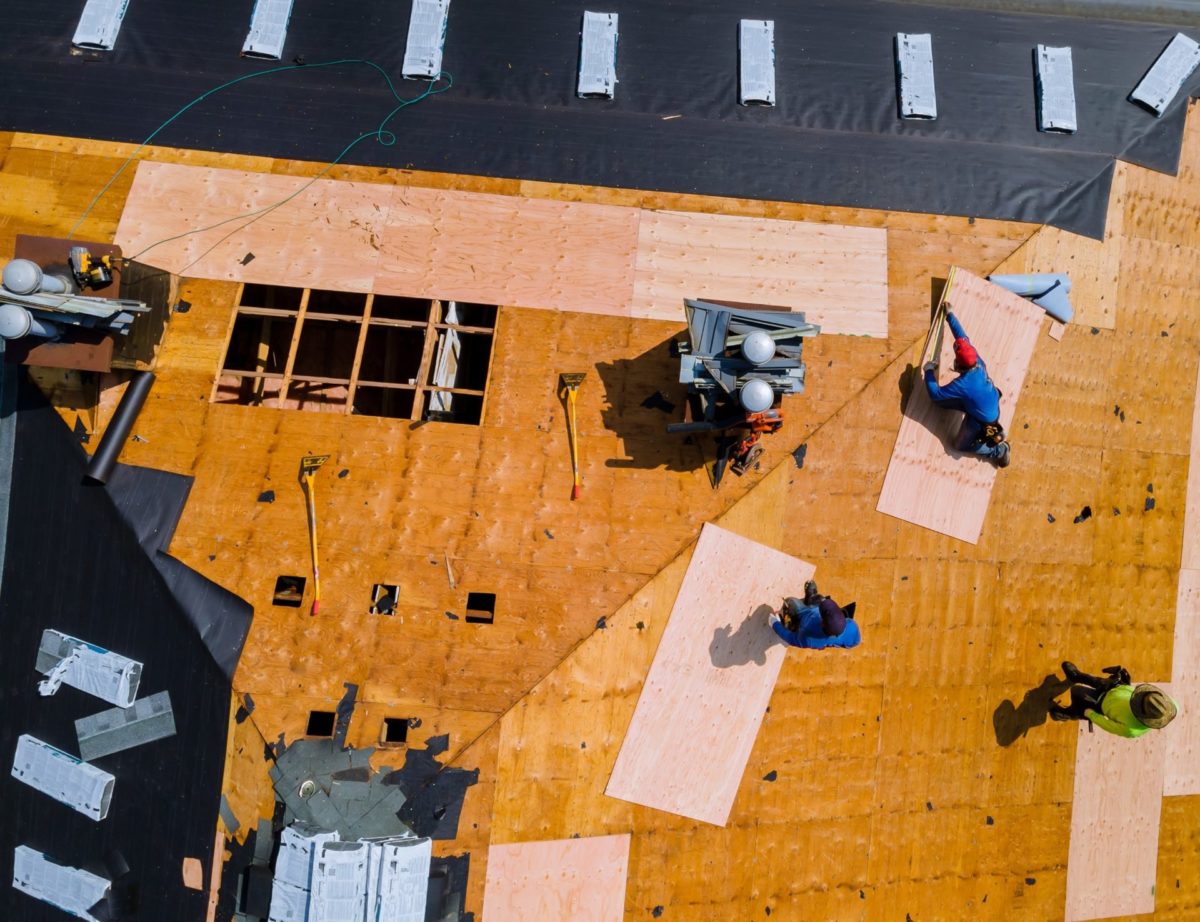All the Roof Elements You Didn’t Know Existed

Posted on January 24, 2023 by Phillip Camerer
Have you ever looked up at a roof and wondered about all the different parts and how they work together? The roof anatomy of your home is more complex than you might think.
Many elements form a roof’s configuration, from the shingles that secure and weatherproof the roof system to the downspouts funneling water to the ground. In today’s blog, we’ll explore all the roof elements you didn’t know were there:
- Roof deck
- Roofing underlayment
- Laminated architectural asphalt shingles
- Gutters and downspouts
- Roofing ventilation
By the time we finish, you should have a firm grasp of your home’s roofing elements and how all the parts work together to keep your home safe, dry, and secure.
Roof Deck
The roof deck is the foundation for your home’s roof system and gets constructed from wood or plywood. As the structural base, the roof decking is the element that all other items secure, beginning with the roof underlay.
Roofing Underlayment
The roof underlayment is an essential component of your home’s roof structure. The material underlayment gets laid between the roof sheathing and the shingles and tacked down onto the underlayment.
That prevents moisture, wind, and temperature changes from reaching your home’s rafters, where damage occurs. There are two types of roofing underlayment:
- Felt
- Synthetic
Felt Underlayment
A felt roofing underlayment is an affordable option. But homeowners beware, felt underlay is water resistant but not waterproof.
As far as felt underlay goes, it is all made using recycled materials, like paper or fiberglass substrate. There are two basic types of felt underlay:
- Asphalt-saturated felt
- Rubberized asphalt
It is also relatively easy to install but prone to tearing and moisture absorbance, leading to roof deterioration. Additionally, it’s pretty heavy and slippery to walk on, making installation difficult and leading to dangerous falls without the proper protection. It’s just one of many reasons to work with licensed and insured roofing contractors.
Synthetic Underlayment
Synthetic roofing underlayment offers enhanced performance compared to felt, as it is more resistant to tearing and is not as prone to water absorption. However, synthetic materials are usually more expensive and challenging to install than felt materials.
Commonly synthetic underlay is made from woven or spun polyethylene or polypropylene. Because of the material make-up of synthetic underlay, it may require special tools, such as a hot air gun or heat welding equipment, as well as extra training for those completing the job.
Laminated Architectural Asphalt Shingles
The most crucial component of your home’s roof is the shingle. One of the best, most affordable materials is laminated architectural asphalt shingles, which protect your home from water, snow, and wind damage.
Most residential roofs today utilize asphalt shingles to cover the roof underlayment. Laminated shingles, sometimes called three-dimensional or composite shingles, contain two or more layers of tabs that overlap each other, adding dimension and texture to a roof’s appearance.
Gutters and Downspouts
Gutters are another key roof element that helps direct water away from your roof system, reducing potential leaks into the roof that can weaken roof support over time. With the proper roof pitch, water runoff will follow the natural pitch to the gutter, funneling it to downspouts and into the ground soil.
Roofing Ventilation
Last but not least, ventilation is an essential roof element that helps reduce heat buildup in your attic during warmer months, reducing stress on the roof’s components and extending its life span.
Working With A Roofing Contractor
If you’re looking to work with a licensed and insured roofing contractor that knows the ins and outs of roofing material, manufacturer warranties, and roof safety protocols, contact the team at Phillip Camerer Roofing today at (417) 451-5479.
Their hours of operation are Monday through Friday, 9:00 AM to 5:00 PM central time. You can also request an on-site visit for a new roof installation.
